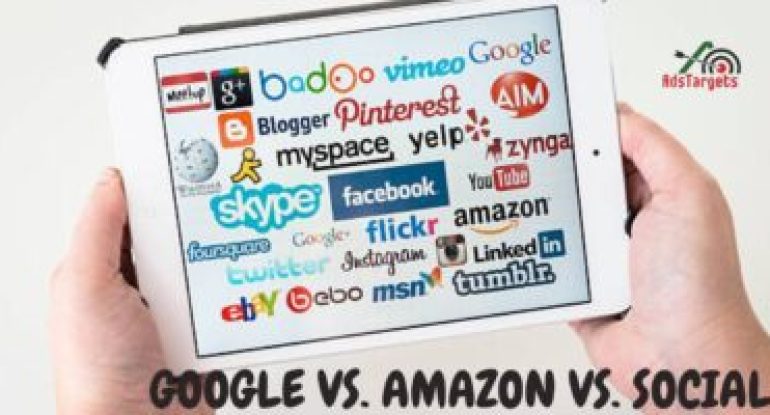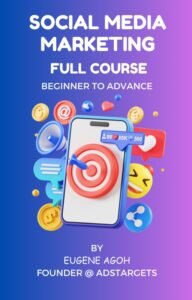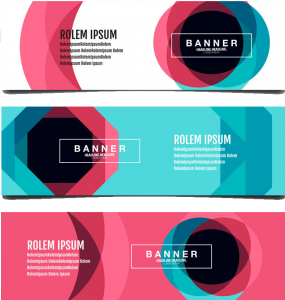Digital advertising isn’t cheap, and no one wants to waste their budget on the wrong platform. So here’s the big question every business eventually faces: Where should I invest—Google, Amazon, or Social Media?
It’s a fair question, and the answer isn’t one-size-fits-all. The truth is, each platform offers unique advantages depending on what you’re selling, who you’re targeting, and how quickly you want results.
Google Ads are perfect for capturing high-intent customers—people already searching for what you offer. If someone types “best noise-cancelling headphones” into Google, they’re not just browsing—they’re probably ready to buy.
Social Media Ads (think Facebook, Instagram, TikTok) are more about discovery. Your brand shows up in a scroll-stopping way, grabbing attention from users who weren’t looking for you—but could still become loyal customers with the right message.
Then there’s Amazon Ads—the go-to for eCommerce brands. If you’re selling physical products, this platform puts your brand directly in front of shoppers ready to click ‘Add to Cart’. With intent-driven shopping behavior and strong conversion rates, it’s a powerhouse you shouldn’t ignore.
So, where should your money go in 2025? The Google vs. Amazon vs. Social debate depends on your goals. Do you want fast sales? Better brand awareness? Long-term customer growth?
In this post, we’ll break down the strengths, weaknesses, and best use cases for each platform—so you can stop guessing and start spending smarter. Let’s dive into the real deal behind Google vs. Amazon vs. Social and help you find the perfect fit for your next campaign.

Table of Contents
Toggle#1. GOOGLE ADS: YOUR GO-TO FOR HIGH-INTENT CUSTOMERS
When it comes to Google vs. Amazon vs. Social, Google Ads stands out as the go-to option for capturing demand right at the source. Think about it—when someone types “best digital marketing agency” or “buy running shoes online” into Google, they’re not casually browsing. They’re looking to solve a problem or make a purchase—now.
That’s what makes Google Ads so powerful. Your business shows up exactly when potential customers are searching for what you offer. Add in the bonus of Display ads and YouTube placements, and suddenly you’re not just targeting searchers but expanding your reach across millions of websites and videos too.
Why Google Ads Works So Well
High intent = high conversions. You’re reaching people who are already in the decision-making phase. That means you’re not interrupting their day—they came looking for you.
You can track everything. From cost-per-click (CPC) to return on ad spend (ROAS), Google Ads gives you data down to the decimal. That makes it easier to see what’s working, what’s wasting your money, and where to double down.
It scales with your business. Whether you’re a one-person local service or a fast-growing eCommerce brand, Google Ads gives you the tools to grow at your pace.
But There Are Some Watchouts
Competitive keywords get pricey. If you’re in a high-demand niche, bidding for top keywords can eat into your budget fast. You’ll need a solid strategy—and regular optimization—to make it work.
It’s not exactly plug-and-play. Success with Google Ads takes time, testing, and tweaking. From keyword research to writing effective ad copy and setting up conversion tracking, there’s a learning curve.
Best For:
In the Google vs. Amazon vs. Social debate, Google Ads is the best fit if you’re targeting people ready to take action. It’s ideal for:
✅Local service providers (think plumbers, lawyers, or salons)
✅E-commerce stores looking to drive traffic straight to product pages
✅B2B companies that rely on inbound leads and long-term sales funnels
#2. AMAZON ADS: BEST FOR PRODUCT-DRIVEN CAMPAIGNS

If you’re selling physical products, Amazon Ads should be front and center in your strategy. In the Google vs. Amazon vs. Social showdown, Amazon is the clear winner when your goal is to get in front of people ready to click “buy now.”
People don’t come to Amazon to browse for fun—they come to shop. So when your ad shows up in search results or on product detail pages, you’re reaching high-intent shoppers in the middle of their purchase journey. That’s powerful.
Why Amazon Ads Can Be a Goldmine
Shoppers are already in buying mode. Unlike social media, where users are distracted and passive, Amazon users are actively comparing prices, reading reviews, and making decisions. Ads placed here hit right when it matters most.
Built-in trust and massive traffic. People trust Amazon. Your product gets a boost just by being on the platform. Plus, you can tap into Amazon’s massive user base with Sponsored Products, Sponsored Brands, and even video ads.
Clear ROI tracking. With detailed reports on impressions, clicks, conversions, and sales, Amazon Ads helps you measure real results—not just vanity metrics.
What to Watch Out For
Highly competitive niches can get expensive. Just like with Google Ads, if you’re in a popular category, ad costs can spike fast. The difference? You’re bidding against other sellers right inside the marketplace.
Limited creative flexibility. Amazon is focused on product listings, so you don’t have as much room to craft a story or build brand personality the way you might on social or YouTube.
You’re tied to the Amazon ecosystem. That means you’re boosting sales on their platform, not necessarily driving traffic to your own website. If long-term brand control is important to you, that’s something to consider.
Best For:
When it comes to Google vs. Amazon vs. Social, Amazon Ads are best for:
✅eCommerce brands selling physical products
✅Private-label sellers and DTC (direct-to-consumer) businesses
✅Brands looking for fast sales and measurable results
#3. SOCIAL MEDIA ADS: BEST FOR BRAND AWARENESS AND LONG-TERM ENGAGEMENT

When people talk about Google vs. Amazon vs. Social, they often overlook the power of social media ads to influence buyer behavior over time. Unlike Google and Amazon, where users often go with intent to search or shop, social ads are all about discovery, engagement, and trust-building.
Think about it—your ideal customers are scrolling through Instagram, laughing at TikToks, or catching up with friends on Facebook. With the right strategy, your brand can appear right there, naturally, without disrupting their experience. It’s subtle, but incredibly powerful when done right.
Why Social Ads Work So Well
They’re designed for storytelling.
Platforms like Instagram and Facebook are highly visual. That means your ads can show, not just tell. From short-form videos and Reels to vibrant carousel ads, you can walk users through your product story or brand vibe in seconds. It’s perfect for showing off fashion, lifestyle, beauty, home décor, food—anything that looks good and feels relatable.
✅ Affordable reach with lower CPC.
Compared to search or marketplace ads, social media ads often come with a lower cost-per-click. This gives you more reach without blowing your budget. It’s a great option for small or growing businesses that want to get seen by more people and test different creatives without spending a fortune.
✅Advanced targeting is next-level.
Facebook, Instagram, LinkedIn, and even TikTok allow you to target people based on incredibly specific data. You can go beyond basic demographics and dig into behaviors (like online shopping habits), interests (like wellness, tech, or travel), job titles, life events, and more. Plus, lookalike audiences help you reach users similar to your current customers.
What to Keep in Mind
✅It’s a longer game.
Unlike Google Ads or Amazon Ads—where people often have their wallets out—social media users aren’t always in buying mode. They’re relaxed, distracted, and not necessarily thinking about purchases. So your ad needs to inspire interest first, then nurture that interest over time through consistent exposure and engagement. Social ads often sit higher in the funnel, and that’s okay—as long as your strategy accounts for it.
✅It needs constant creative refresh.
Social content moves fast. What worked two weeks ago might flop today. To stay relevant, you’ll need to refresh your creative regularly, test new formats, switch up your messaging, and keep an eye on trends—especially on platforms like TikTok and Instagram Stories. It’s not difficult, but it does take attention.
✅Engagement ≠ sales—at least not right away.
A like or share is great, but it doesn’t always mean a sale is coming. That’s why social media ads work best when paired with a full-funnel strategy—one that includes remarketing, lead nurturing, and follow-ups through email or content marketing. The return comes with consistency.
Best For:
In the Google vs. Amazon vs. Social discussion, social media ads shine when your goal is visibility, brand storytelling, and relationship-building. They’re ideal for:
✅Lifestyle brands looking to grow a loyal following by sharing relatable, shareable content
✅E-commerce stores promoting products with eye-catching visuals, deals, and retargeting
Service-based businesses that need to build trust over time, using thought leadership, testimonials, and behind-the-scenes content.
Cost Comparison: Which Platform Delivers the Best Bang for Your Buck?

When you’re deciding where to spend your digital ad budget, cost vs. ROI is everything. It’s not just about which platform charges more per click. It’s about which one actually drives results—leads, sales, or brand loyalty. That’s why it’s worth digging into the real-world return each platform can offer.
In the debate between Google vs. Amazon vs. Social, understanding cost structure and value is the key to spending smart—not just spending more.
#1. Google Ads: Higher CPC, But Higher Intent
Google Ads tends to be the most expensive of the three options when it comes to cost-per-click (CPC). You’re often looking at:
✅$1–$5 per click in most industries
✅$10–$50+ per click in competitive spaces like legal, insurance, or tech
That said, you’re paying for intent. These users are actively searching for specific products, services, or solutions. If someone Googles “best CRM for small business,” they’re halfway to buying—they just need to find the right vendor.
So even though it’s more expensive upfront, Google Ads often delivers a stronger return when your goal is quick lead generation or direct sales. It’s especially effective for B2B brands, eCommerce stores, and local service providers with high-ticket offerings.
Great ROI for: High-intent keywords, landing page funnels, service-based businesses, and short sales cycles.
#2. Amazon Ads: Mid-Range Costs, High Buyer Intent
Amazon Ads usually sit in the middle ground in terms of cost. CPCs can range from $0.80 to $2.00+, depending on the product category and competition. But here’s the game-changer: users on Amazon are already in shopping mode.
That means your ad isn’t interrupting them. It’s helping them make a purchase decision. If you’re selling physical products, Amazon Ads often outperform both Google and Social when it comes to conversion rates and ROI—especially when optimized with great listings, reviews, and competitive pricing.
Strong ROI for: DTC brands, private-label sellers, product launches, and retail campaigns targeting ready-to-buy shoppers.
#3. Social Media Ads: Lower CPC, Longer Funnel
Social media platforms like Facebook, Instagram, LinkedIn, and TikTok usually offer the lowest CPCs, often ranging from:
$0.30 to $1.50 per click depending on your audience and niche
At first glance, that sounds like a no-brainer, right? But here’s the catch—users aren’t actively searching for what you’re selling. You’re catching them mid-scroll, maybe while they’re watching cat videos or checking out memes.
That doesn’t mean it’s a bad investment. In fact, for brand awareness, list-building, content promotion, and relationship-building, social media ads can deliver massive value at a low cost. You just need a longer runway. Social works best when paired with retargeting or follow-up campaigns to guide users from interest to action.
Efficient ROI for: Startups, lifestyle brands, lead gen campaigns, and businesses focused on long-term customer growth.
So, Which One Offers the Best ROI?
There’s no one-size-fits-all answer in the Google vs. Amazon vs. Social debate. Your best bet depends on what you’re trying to achieve:
Goal/Best Platform/Why
✅Immediate sales / leads Google Ads High intent, strong conversion potential
✅Product-based conversions Amazon Ads Shoppers ready to buy, built-in trust
✅Brand building & awareness Social Media Ads Low cost, wide reach, strong engagement
If you’re trying to maximize ROI, don’t just look at clicks. Think about the entire journey—from ad to conversion. Choose the platform that aligns best with your goals, audience, and how long you’re willing to nurture a sale.
Which Platform Is Right for Your Business?

If you’re weighing the pros and cons of Google vs. Amazon vs. Social, you’re not alone. One of the most common questions business owners ask is: Which platform should I invest in? And the truth is—there’s no one-size-fits-all answer.
It all depends on your business goals, customer journey, and marketing strategy.
If You Need Quick Leads or Sales: Google Ads Wins
For businesses that need immediate results, like a service provider looking to book appointments or an e-commerce brand launching a product, Google Ads is a powerful weapon. You’re targeting people who are actively searching for what you offer—so they’re more likely to take action fast.
Example: If someone Googles “emergency AC repair in Lagos” or “buy wireless earbuds,” they’re probably not browsing casually—they’re ready to convert. Google Ads gets you in front of these high-intent customers at just the right moment.
If You Want to Build a Stronger Brand: Social Ads Are Your Ally
If your goal is to increase visibility, grow a community, and stay top of mind, then Social Media Ads (like Facebook, Instagram, or TikTok) are your go-to. They let you reach people where they spend the most time online—even if they’re not actively looking for your product or service yet.
You can use videos, carousels, testimonials, and even behind-the-scenes clips to build trust, tell your story, and nurture leads over time. It’s the perfect space for lifestyle brands, coaches, creatives, or service providers who sell based on personality or vibe.
If You Sell Physical Products: Amazon Might Be Your Secret Weapon
In the Google vs. Amazon vs. Social debate, Amazon Ads often get overlooked—yet they’re a game-changer for product-based businesses. If you’re selling anything tangible, Amazon lets you tap directly into buyers who are already in shopping mode.
You don’t need to convince them to shop. You just need to show up when they’re browsing. Amazon is especially effective for DTC brands, private-label sellers, and businesses that want to maximize conversion efficiency.
✅ Combine Platforms for a Full-Funnel Strategy
Here’s the kicker: you don’t have to choose just one. The smartest brands mix and match platforms to cover the entire customer journey—from discovery to decision.
Example Strategy
Let’s say you run a local fitness center. You could:
✅Use Google Ads to target people searching for “best gyms near me”
✅Run Social Media Ads with workout tips, transformation stories, or class clips to build community and brand love
If you’re selling supplements or merch, tap into Amazon Ads to get those products in front of active shoppers
By using each platform for its strength, you create a well-rounded, high-impact strategy that works at every touchpoint.
Bottom line? When it comes to Google vs. Amazon vs. Social, the best platform is the one that aligns with your goals, your audience, and your resources. Be clear on your objectives, and the right choice—or combination—becomes a lot easier.
7 Key Factors to Consider When Choosing Where to Advertise in 2025

It’s about strategy, precision, and performance. With Google, Amazon, and social media platforms like Facebook, Instagram, and TikTok leading the charge, the real question for 2025 is: Where will you get the most bang for your ad buck?
Here are 7 key factors to guide your decision:
#1. User Intent
Google: People come to Google with clear, high-intent searches. They’re actively looking for something—whether it’s a product, service, or solution.
Amazon: User intent here is ultra-commercial. If they’re searching on Amazon, they’re ready to buy—making it perfect for e-commerce. 7 Key Factors to Consider When Choosing Where to Advertise in 2025
Social Media: Intent is more passive. Users are there to connect, scroll, and consume content—not necessarily to shop. Ads must interrupt gracefully and inspire action.
Bottom Line:
Choose Google for leads and inquiries, Amazon for instant conversions, and social if your goal is to build awareness or emotional connection.
#2. Audience Targeting Capabilities
Google: Offers keyword-based targeting, contextual ads, and in-market audiences via Google Ads. Very powerful for search-driven ads.
Amazon: Uses deep shopper data (purchase history, browsing behavior) for precise targeting, but only within the Amazon ecosystem.
Social Media: This is where social shines. Facebook, Instagram, and TikTok offer hyper-targeted options based on demographics, behaviors, interests, and even lookalikes.
Bottom Line:
If hyper-specific audience segmentation matters, social media wins.
#3. Ad Formats and Creativity
Google: Focuses on search ads, display banners, shopping ads, and video (YouTube). It’s versatile but not the best for visual storytelling.
Amazon: Primarily features product-based ads with limited creative flexibility. Great for conversion, less so for branding.
Social Media: Rich in visual and video ad formats—Reels, Stories, carousels, influencers, UGC. It’s a playground for creativity.
Bottom Line:
Go social if brand storytelling and visual impact are essential.
#4. Cost and ROI
Google: Can be expensive for competitive keywords but offers measurable ROI if optimized well.
Amazon: CPCs are rising, but conversion rates are often higher, balancing out costs.
Social Media: Lower entry costs but may need more testing to reach the right audiences with the right message.
Bottom Line:
Amazon offers efficient ROI for product sellers. Google gives good returns for intent-driven campaigns. Social is ideal for broad reach at lower cost but requires strong creative to convert.
#5. Data and Attribution
Google: Strong reporting tools via Google Ads and Analytics. It helps track user journeys across websites.
Amazon: Keeps tight control on data. Attribution is improving with Amazon Attribution, but insight is still limited outside its ecosystem.
Social Media: Facebook Ads Manager and similar tools offer solid tracking. However, iOS privacy changes have disrupted attribution accuracy.
Bottom Line:
Google provides the most reliable and granular attribution data in 2025.
#6. Sales Funnel Positioning
Google: Best for bottom-of-funnel (BOFU) conversions—people ready to act now.
Amazon: Pure BOFU platform. Ideal for direct purchases.
Social Media: Excellent for top-of-funnel (TOFU) and middle-of-funnel (MOFU) awareness and engagement.
Bottom Line:
Use Google/Amazon for closing sales. Use social for attracting and nurturing leads.
#7. Platform Ecosystem Fit
Google: Best for websites with strong SEO, landing pages, and lead magnets.
Amazon: Only makes sense if you have an active seller account and inventory on Amazon.
Social Media: Works for brands with strong visual identity, content strategy, and storytelling edge.
Bottom Line:
Your business model determines your ideal ad platform. Match your ecosystem to the platform’s strengths.
Conclusion
When it comes to Google vs. Amazon vs. Social, it’s not about picking a “winner.” It’s about understanding the unique strength each platform brings to the table—and how they can work together to help you reach your goals.
Google Ads is your go-to when you want to capture direct intent traffic. People are actively searching, and they’re ready to take action. On the other hand, Social Media Ads shine when your focus is on building brand awareness, sparking interest, and nurturing long-term customer relationships.
If you’re in e-commerce or selling physical products, Amazon Ads may also enter the mix as your secret weapon for conversion-driven campaigns. In fact, a well-rounded strategy might include all three—using Google to capture, Social to connect, and Amazon to convert.
Rather than asking which platform is better, ask: What do I want to achieve right now?
Here’s a simple guide:
If you’re prioritizing immediate sales, consider allocating 60% of your budget to Google Ads and 40% to Social Media Ads to catch those high-intent customers first, while still building future demand.
If you’re in growth or awareness mode, flip the script—put 60% into Social Ads to increase visibility and engagement, while keeping 40% on Google to catch those who start searching after seeing your content.
And if you’re selling products on Amazon, consider carving out a separate budget tier for marketplace ads, especially if you’re seeing organic traction on the platform.
The magic happens when you test, track, and tweak. Run A/B tests, analyze performance data, and adjust your split based on what drives real results. That’s how smart businesses build full-funnel strategies that don’t just burn ad spend—but grow revenue.
At the end of the day, success in digital advertising doesn’t come from favoring one platform over another. It comes from aligning your ads with your customer’s journey—and choosing the right channel at the right time.
Ready to turn clicks into customers? Take a strategic approach to Google vs. Amazon vs. Social, and you’ll be in a better position to scale, optimize, and win.








